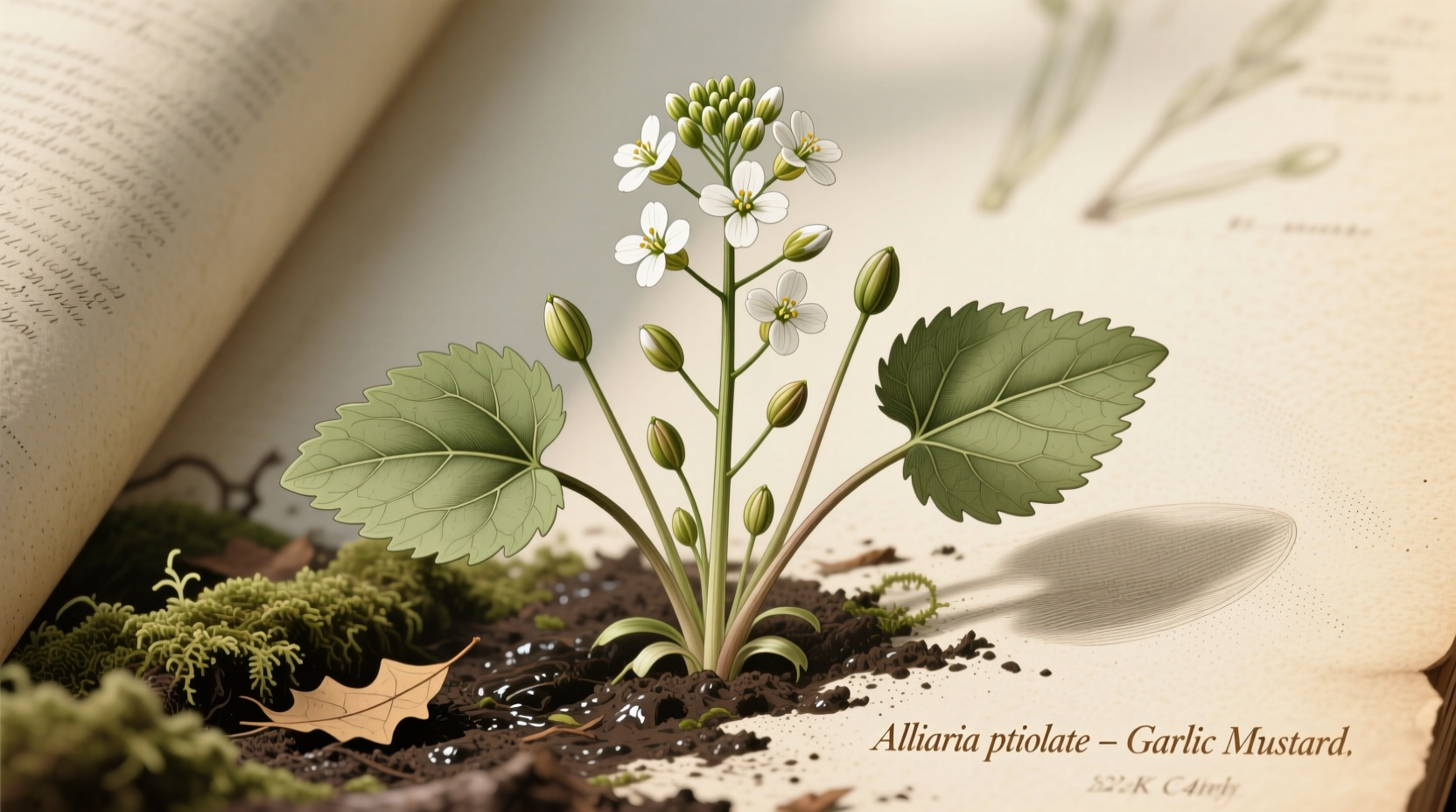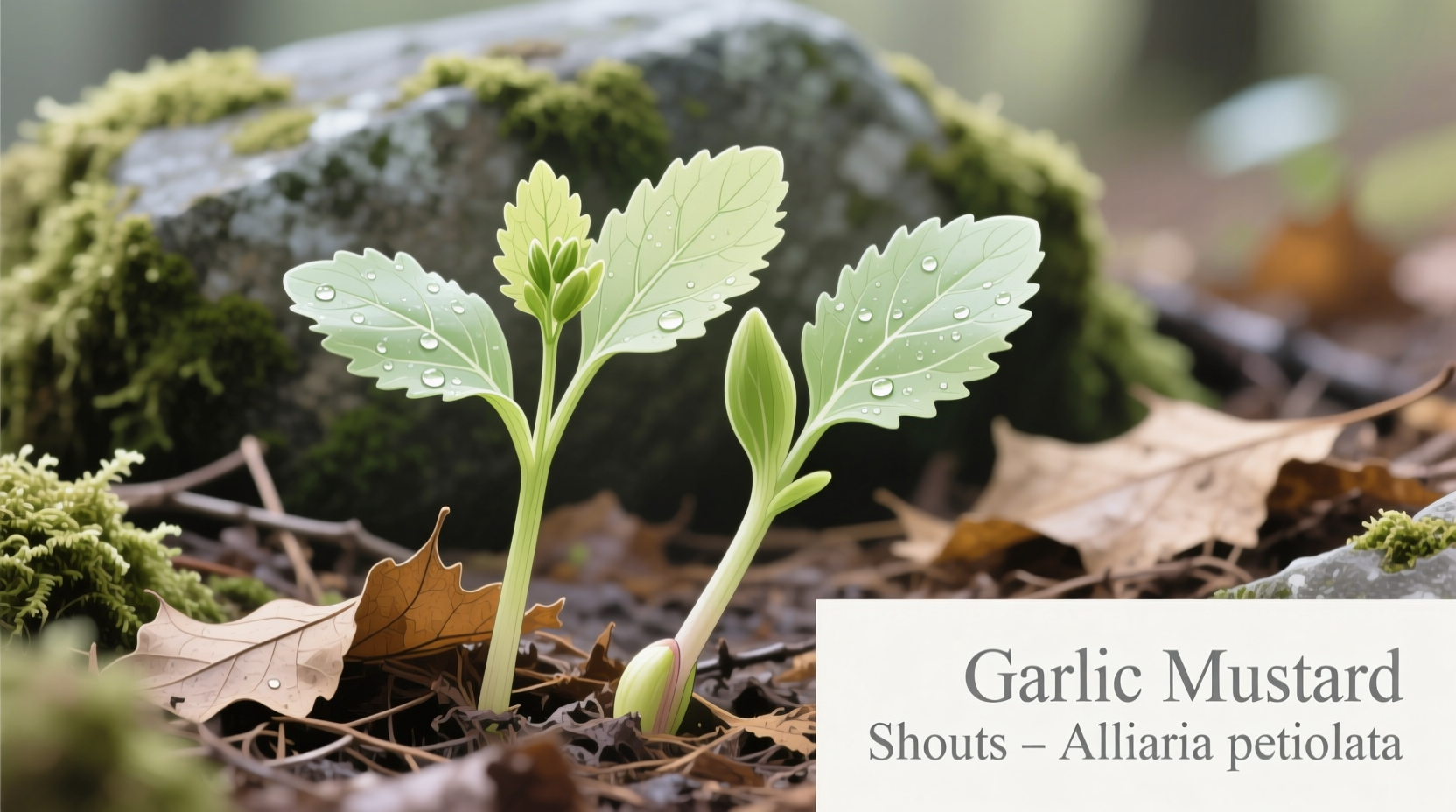Foraging garlic mustard shoots transforms an ecological problem into a culinary opportunity. As an invasive species threatening North American forests, harvesting these greens helps restore native ecosystems while providing free, nutrient-dense food. This guide delivers everything you need to safely identify, ethically harvest, and creatively prepare garlic mustard shoots—turning an environmental challenge into your spring kitchen staple.
Why Garlic Mustard Shoots Matter Now
Spring foragers face a narrow window to harvest garlic mustard shoots at their peak tenderness and flavor. These young greens emerge in early spring (March-April in most temperate zones), offering the most delicate texture before the plant develops its stronger, more pungent mature flavor. Unlike many wild edibles, garlic mustard shoots provide a dual benefit: they're both nutritious and help control an invasive species spreading across 30+ U.S. states and Canadian provinces according to the National Park Service.
Identifying Garlic Mustard Shoots: Your Visual Guide
Correct identification is crucial before harvesting any wild plant. Garlic mustard shoots appear as basal rosettes with kidney-shaped leaves that emit a distinct garlic aroma when crushed. The key identification markers include:
- Leaf shape: Rounded to kidney-shaped with scalloped edges (first-year plants)
- Stem: Smooth, hairless, and triangular in cross-section
- Smell: Strong garlic odor when leaves are crushed
- Height: 4-10 inches tall in shoot stage (before flowering)
- Season: March to mid-April in most regions

| Garlic Mustard Shoots | Potential Look-Alikes | Key Differentiators |
|---|---|---|
| Garlic mustard (Alliaria petiolata) | Meadow garlic (Allium canadense) | Garlic mustard has broader leaves; meadow garlic has narrow, grass-like leaves with onion smell |
| Garlic mustard shoots | Wild ginger (Asarum canadense) | Wild ginger has heart-shaped leaves; no garlic smell; grows in dense shade |
| Garlic mustard shoots | Poison hemlock (Conium maculatum) | Hemlock has fern-like leaves; purple-spotted stems; no garlic odor (EXTREMELY TOXIC) |
The Sustainable Harvesting Timeline
Timing determines both flavor quality and ecological impact. Follow this progression for optimal results:
- March (Early Spring): Harvest young shoots (4-6 inches tall) with rounded leaves before flowering. Flavor is mild and versatile.
- Early April: Collect flowering shoots with white blossoms. Flavor intensifies but remains usable.
- Late April: Harvest seed pods before they mature. This prevents further spread while providing edible seeds.
- May-June: Focus on root removal to prevent regrowth. Mature plants become too fibrous for culinary use.
According to the USDA Forest Service, complete removal of the taproot is essential for effective control. When harvesting, grasp the base firmly and pull straight up to remove the entire root system.
Practical Harvesting Guidelines
Follow these evidence-based practices for safe, sustainable foraging:
- Location matters: Harvest only in areas confirmed pesticide-free (at least 3 years). Avoid roadsides (heavy metal contamination) and protected natural areas where removal requires permits.
- Quantity limits: Take no more than 25% of plants in any patch to maintain ecological balance while controlling spread.
- Legal considerations: Check local regulations—many municipalities encourage removal on public lands. The EPA supports controlled harvesting as part of invasive species management.
- Safety first: Always carry a field guide and consult experienced foragers when starting. When in doubt, leave it out.
Culinary Applications: From Forest to Feast
Garlic mustard shoots offer remarkable culinary versatility. Their unique flavor profile combines garlic's pungency with mustard's sharpness, making them suitable for both raw and cooked applications.
Raw Preparation Techniques
Young shoots (under 6 inches) work best raw:
- Salads: Mix with milder greens (like lettuce or spinach) at a 1:3 ratio
- Pesto: Substitute for basil (use 1 cup shoots, 1/2 cup nuts, 1/2 cup olive oil, 1/4 cup Parmesan)
- Vinegar infusions: Steep shoots in apple cider vinegar for 2-4 weeks for salad dressings
Cooked Applications
Mature shoots benefit from cooking:
- Sautéed greens: Cook with olive oil and garlic for 3-5 minutes until wilted
- Stir-fries: Add in final 2 minutes of cooking to preserve flavor
- Quiches and frittatas: Blanch first to reduce bitterness
- Pickling: Preserve in vinegar brine for year-round use
Research from the University of Minnesota Extension shows that cooking reduces the plant's goitrogen content, making it safer for regular consumption. Blanching for 2 minutes before use decreases potential thyroid interference while preserving nutrients.
Nutritional Profile and Safety Considerations
Garlic mustard shoots deliver impressive nutritional benefits when harvested at the right stage:
- Vitamin C: Higher than oranges by weight in young shoots
- Vitamin A: Significant beta-carotene content
- Calcium and iron: Bioavailable forms when cooked properly
- Antioxidants: Glucosinolates with potential anti-cancer properties
However, certain individuals should exercise caution:
- Those with thyroid conditions should limit consumption (glucosinolates may interfere with iodine absorption)
- People on blood thinners should maintain consistent intake due to vitamin K content
- Pregnant women should consult healthcare providers before regular consumption
Environmental Impact: Foraging as Conservation
Your harvesting directly contributes to ecosystem restoration. According to scientific research published in Scientific Reports, consistent removal of garlic mustard over 3-5 years allows native plant diversity to recover by 60-80%. Each pound of shoots harvested represents approximately 100 plants prevented from seeding.
For maximum ecological benefit:
- Focus on edge habitats where garlic mustard invades native areas
- Remove entire plants (roots included) rather than just cutting tops
- Compost harvested plants properly (hot composting kills seeds)
- Report large infestations to local conservation authorities
Preservation Techniques for Year-Round Enjoyment
Extend your harvest with these proven methods:
- Freezing: Blanch shoots for 90 seconds, cool in ice water, then freeze in airtight containers (6-8 month shelf life)
- Drying: Dehydrate at 95°F until brittle, then store in dark glass jars (use for seasoning)
- Pesto freezing: Portion into ice cube trays with olive oil cover (12 month shelf life)
- Vinegar infusions: Steep shoots in apple cider vinegar for 3-4 weeks, then strain (6 month shelf life)
Studies from the Oregon State University Extension confirm that freezing preserves 85-90% of vitamin C content compared to fresh, while drying retains most mineral content but reduces vitamin levels.
Common Questions About Garlic Mustard Shoots
Here are answers to the most practical questions foragers and cooks ask:











 浙公网安备
33010002000092号
浙公网安备
33010002000092号 浙B2-20120091-4
浙B2-20120091-4